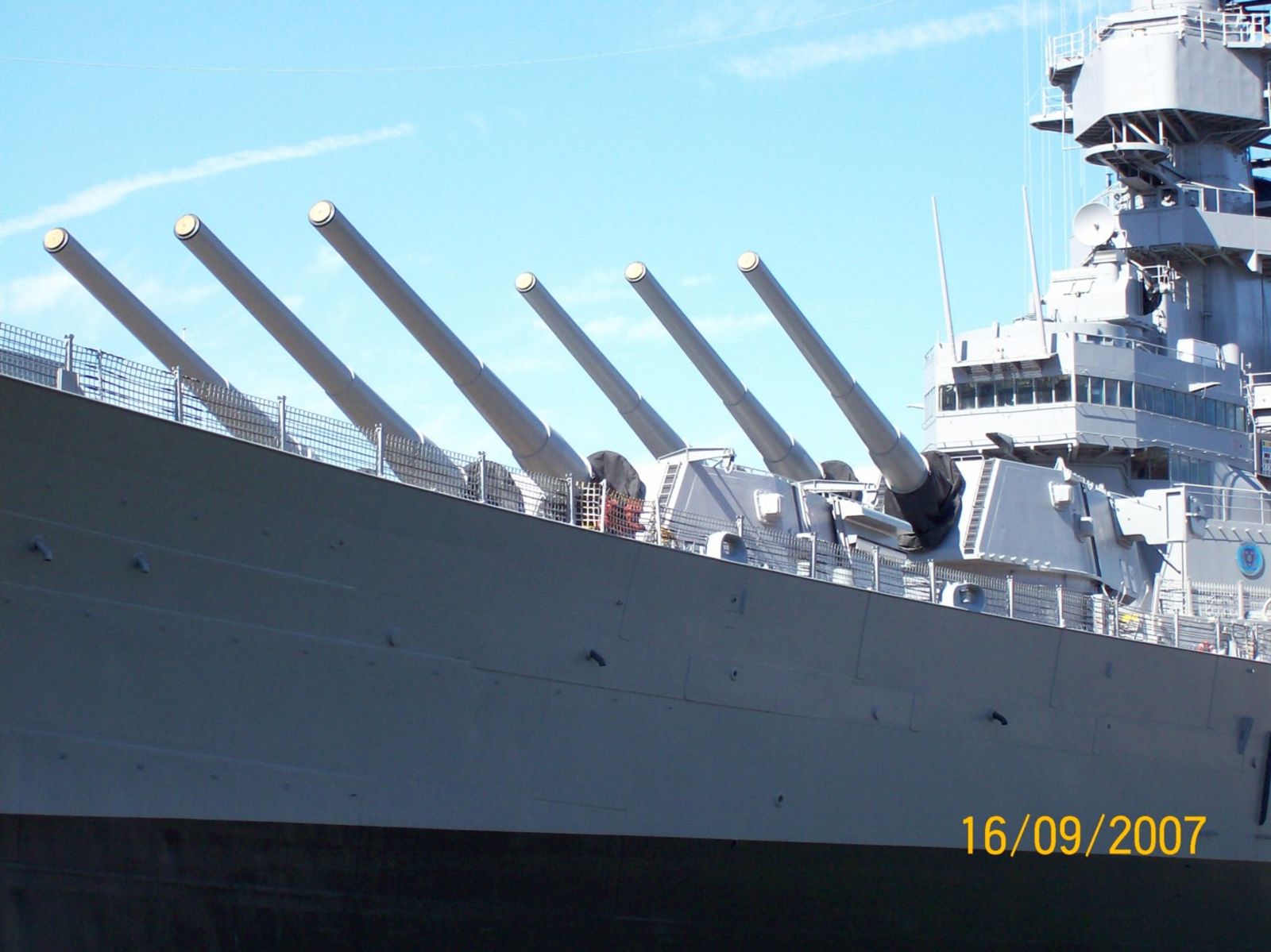
Third of the four Iowa-Class battleships built for the USN in WW2, BB-64 was commissioned in April of 1944, and served with Task Force 38 in the 3rd Fleet and with the 5th Fleet. Owing to the Wisconsin’s heavy anti-aircraft batteries, the ship was used to screen the carriers from deadly Kamikaze attacks when she was not shelling ground targets with her 16" guns. The Wisconsin softened up Japanese positions at Manila, survived Typhoon Cobra, covered amphibious forces at Lingayen Gulf, Formosa, Luzon and Nansei Shoto. The ship also attacked Japanese positions between Saigon and Camranh Bay before moving on to Hon Kong, Canton, and Hainan. She provided direct support during the Iwo Jima landings as well as attacked targets on the Home Island of Kyushu and on Okinawa. In the final months of the war, BB-64 attacked steel mills and oil refineries in Hokkaido and sites on the main Home island of Honshu itself. The Wisconsin arrived in Tokyo harbor three days after the formal signing of Japan’s surrender on her sister ship the Missouri, ending her service with five battle stars, 3 Kamikaze kills and 4 partial kills and had covered almost one hundred six thousand miles. As part of Operation Magic Carpet, the ship embarked hundreds of GIs as she stood out from Okinawa for Pearl Harbor, then finally San Francisco. After several tours of South America and training cruises for most of 1947, the ship was mothballed, only to be recommissioned in 1951 to shell Chinese and North Korean positions. Here Wisconsin suffered her only hit by direct enemy action when a shell from a North Korean 152mm gun struck the armor on a 40mm mount. The ship suffered no damage, and destroyed the offending battery with a full salvo from her 16" guns. After Korea the ship returned to training, serving without serious incident until May of 1956 when she collided with the destroyer Eaton in heavy fog.

The Navy replaced the damaged section with the matching piece from the incomplete USS Kentucky, returning the Wisconsin to service in only 16 days. The ship continued to serve in training cruises and exercises, as well as being called upon to sink a KC-97 Stratofreighter that had ditched after losing two engines, then floated for 10 days. The ship was returned to the reserve fleet in 1958, remaining there until 1986, when she was refitted with box launchers for Tomahawk and Harpoon missiles and put back into service. In 1991 she attacked targets in Iraq and Kuwait with those Tomahawks as well as her guns, now receiving targeting data from USMV OV-10 Broncos and her own RQ-2 Pioneer RPVs. In what was a first in warfare, Iraqi forces on Faylaka Island surrendered to the RPV, waving makeshift white flags.
The Wisconsin was retired for a final time in 1991, joining the reserve fleet in Philadelphia before being relocated to Norfolk in 1996 and opening as a museum ship in 2001.












